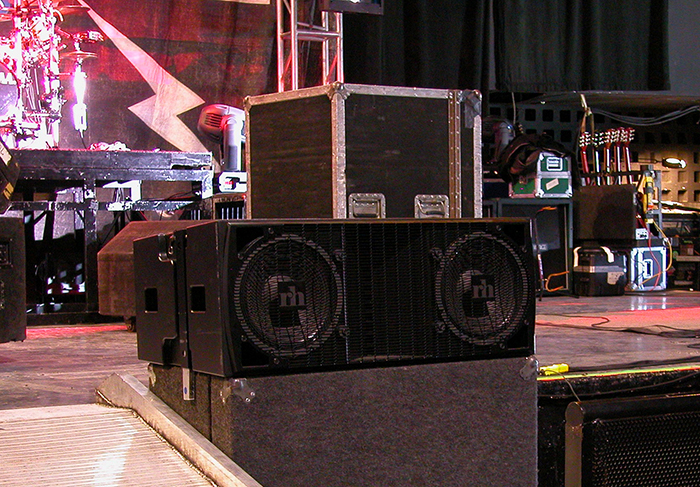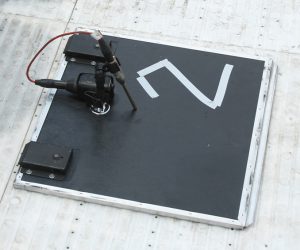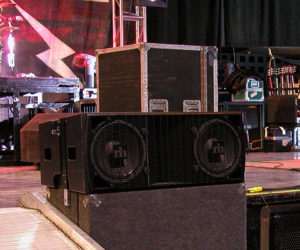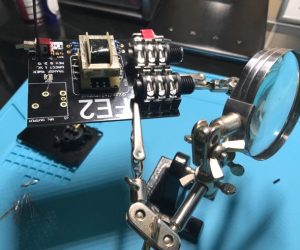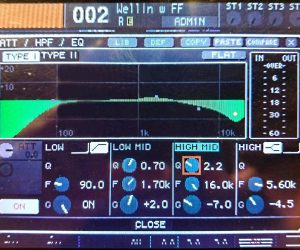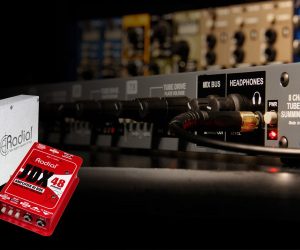As a college educator to newbie live sound students, I’m always looking to simplify audio engineering techniques into easy to understand best practices. Whether it’s mixing, system optimization, or stage set up, I try to research available literature, experiment, talk to working professionals, and then organize the information for my students.
The challenge in this effort is that the sound reinforcement industry is highly subjective, and there are many opinions regarding how to complete most any task. There’s simply no correct way to do things when art is involved.
With this in mind, I often present students with what appears to be the most scientifically viable approach, but then offer alternative methods for evaluation. Through critical analysis of contrasting opinions, I encourage students to make their own conclusions.
One subject that I have found difficulty in finding a single best practice is the tuning of front fill loudspeakers. With main loudspeakers typically flown overhead, coverage and clarity in the first few rows of an audience are often less than ideal. Front fills thus become necessary, and a variety of calibration techniques have evolved to smooth the transition from fills to mains coverage.
Let’s look at three alternative front fill alignment approaches.
Getting Started
Depending on venue size and target SPL of the event, a variety of different loudspeakers might be deployed as front fills. In touring applications, larger 2-way boxes and even line array elements might be used to cover the “pit.” In smaller venues where sightlines are a concern, front fills are typically small in size, and may be mounted within the front of a stage or placed on the lip of a stage or orchestra pit.
Ideally, fills should be from the same manufacturer and product line as the mains. Although it’s not mandatory, matching product lines can make the system optimization process go more smoothly, as mains and fills are more likely to share a similar magnitude and phase response. Regardless of the chosen model, front fills are typically EQ’d to match the tonal balance of the mains, and high passed to eliminate low frequencies that can interact with energy from the mains, subwoofers, and stage.
Another important consideration when selecting and optimizing front fills is to ensure they possess headroom similar to the mains system, and that fills do not clip at a lower input level than the mains. Front of house engineers often cannot hear front fills. If the fills are under powered, they may clip and fry while the mains are rocking, and the mixer may never know it. Not only might this sound bad for the front rows, but the issue may not be discovered until another day, when an expensive replacement of drivers is required.
Important Factors
Time alignment and level setting are critical steps in front fill optimization. This is because fills do not work in isolation. Spill from the stage and mains can also be heard in the front rows, and “flamming” or comb filtering may be audible if the system is not time aligned.
Fills are usually closer to their target audience than mains and/or sound sources on stage, and as result, their drive lines are typically delayed so energy exits the fills in sync with the arrival of sound from these other more important sources. Without delay, sound from the fills would meet the audience first, with energy from the stage and/or mains arriving late. Depending on the difference in arrival times, various ugly-sounding issues can arise.
If the difference in arrival between fills and other sources is less than 20 milliseconds (ms), comb filtering can occur. Comb filtering, or combing, is a pattern of peaks and dips in frequency response caused when identical but time-offset signals are intermixed. Combing is typically heard as a hollow or nasal sound and a graphic example can be seen in Figure 1.

If the difference in arrival time between fills and other sound sources between 20 ms and about 150 ms, a flam is heard. Flam is a musical term referring to a grace note, or two notes slightly off in time. Flamming front fills can smear percussive transients and can make drum hits sound doubled.
Making things more complex, the audibility of combing and flamming depends on the relative level of the fills and other sound sources. Up close to the fills, where they’re about 10 dB (or more) louder than the mains or stage, combing and flamming is difficult to detect, as the fills drown out the other sound sources. Vice versa also applies. Further into the audience, at a location where the mains are approximately 10 dB louder than the fills, it’s hard to hear the fill speakers and any combing or flamming.
The location of greatest concern is where the fills and mains are at equal level. Called the acoustic crossover, the location of equal level sees the most significant interaction between spaced sound sources. This is where flamming or combing is most severe. Because of this, it is at the acoustic crossover that delay time of the front fills is often determined. Get the fills synced at the acoustic crossover, and flamming will disappear while combing will be minimized as much as possible.



